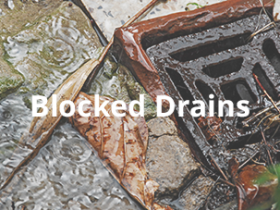Sterile sewer flood can happen because of impeded or broken sewer lines, invasion of extreme stormwater, or breakdown of siphons. In these cases, untreated sewage is released from a clean sewer into the climate preceding arriving at sewage treatment offices. To keep away from this, support is required. The upkeep necessities change with the sort of clean sewer. As a rule, all sewers crumble with age, however, penetration and inflow are issues remarkable to clean sewers since both joined sewers and visit website for tempest channels are measured to convey these commitments.

Holding penetration to satisfactory levels requires a better quality of support than needed for primary trustworthiness contemplations of consolidated sewers. An exhaustive development investigation program is expected to forestall the unseemly association of the basement, yard, and rooftop channels to clean sewers. The likelihood of improper associations is higher where consolidated sewers and clean sewers are tracked down in closeness, since the development workforce may not perceive the distinction. Numerous more seasoned urban areas actually utilize consolidated sewers while nearby rural areas were worked with discrete sterile sewers.
Factors affect sewer pipes
- For quite a long time, when sterile sewer pipes broke or experienced other harm, the main choice was a costly uncovering, expulsion, and substitution of the harmed pipe, regularly requiring road asphalt a while later. During the 1950s a unit was created where two units at each end with a unique concrete in the middle between were pulled starting with one sewer vent cover and then onto the next, covering the line with the concrete under high tension, which then relieved quickly, fixing all breaks and breaks in the line.
- Today, a comparative technique utilizing epoxy pitch is utilized by certain districts to re-line maturing or harmed pipes, successfully making a “pipe in a line”. These strategies might be unsatisfactory for where the full distance across the first line is expected to convey anticipated streams and might be an imprudent venture assuming that more prominent wastewater streams might be expected from populace development, expanded water use, or new help associations inside the normal assistance life of the maintenance.
- One more well-known technique for supplanting matured or harmed lines is called pipe exploding, where another line, normally PVC or ABS plastic, is drawn through the old line behind an “expander head” that falls to pieces the old line as the enhanced one is drawn through behind it. These strategies are generally appropriate for trunk sewers since the maintenance of lines with horizontal associations is confounded by making arrangements to get parallel streams without tolerating unfortunate invasions from deficiently fixed intersections.
History of Sterile Sewer
Sterile sewers advanced from joined sewers constructed where water was ample. Creature excrement was collected on city roads while creature-fueled transport moved individuals and products. Gatherings of creature defecation energized unloading bedpans into roads where night soil assortment was illogical. Consolidated sewers were worked to utilize surface spillover to flush waste off roads and move it underground to places far off from populated regions. Sewage treatment became fundamental as the populace extended, yet expanded volumes and siphoning limits expected for the treatment of weakened squander from joined sewers are more costly than treating undiluted sewage. Networks that have urbanized during the twentieth hundred years or later by and large have assembled separate frameworks for sewage (clean sewers) and stormwater, because precipitation causes generally shifting streams, diminishing sewage treatment plant effectiveness. In the UK, the expression “foul sewer” was likewise being used for a sterile sewer.